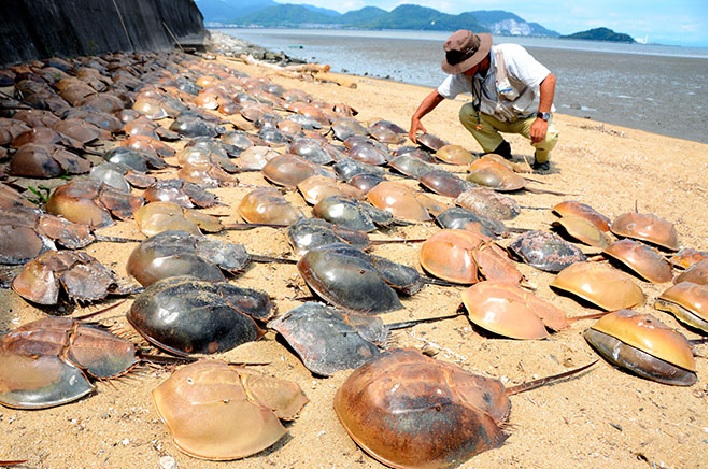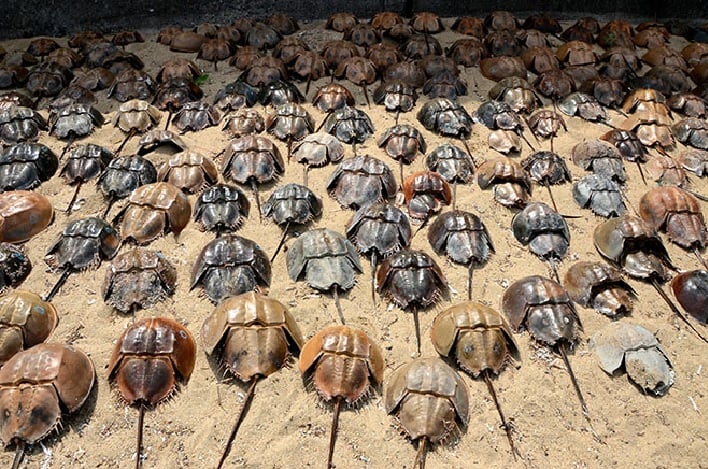Nearly 500 dead horseshoe crabs have washed ashore at a tidal flat in Kita-Kyushu, Japan.
And researchers have no idea what is killing the endangered species that dates back 200 million years.
50 to 60 dead horseshoe crabs are found annually at the Sonehigata tidal flat. But 490 have already been discovered this year. This is the largest number in the last 20 years.

According to officials, the dead horseshoe crabs were healthy. But they do not say if they measured radioactivity!
In contrast, officials argued that sea level rise, decrease in places to lay eggs and lack of nutrition are the main causes for their death. Finally, the seawater temperature off Fukuoka Prefecture was 1 degree higher than usual during summer. But horseshoe crabs can be found in further southern waters as well and thus are resistant to high water temperatures.
The first dead horseshoe crabs were discovered in January, a time when they are typically dormant. The number of dead crabs started increasing in late June, July and August. Some days, more than 10 dead horseshoe crabs were found.

So what the heck?
The culprit may be linked to climate change. But Japan and its coasts have been totally contaminated by the Fukushima nuclear disaster… And this radiative contamination is of course one of the major cause of any mass die-offs in the area for the years to come.












[…] Por último , la temperatura del agua de mar de la prefectura de Fukuoka fue de 1 grado más alto de lo normal durante el verano . Pero los cangrejos de herradura pueden ser encontrado en otras aguas del sur , así y por lo tanto son resistentes a las altas temperaturas del agua, segun publica el portal srangesounds. […]
[…] Original Article:http://strangesounds.org/2016/09/490-horseshoe-crabs-mystery-death-japan-fukushima.html […]
[…] STRANGE SOUNDS REPORT HERE […]